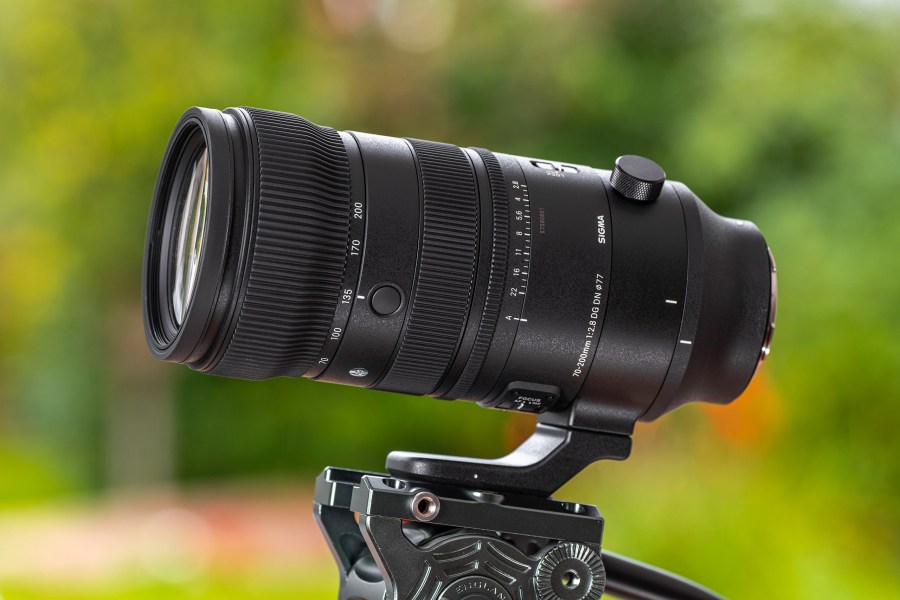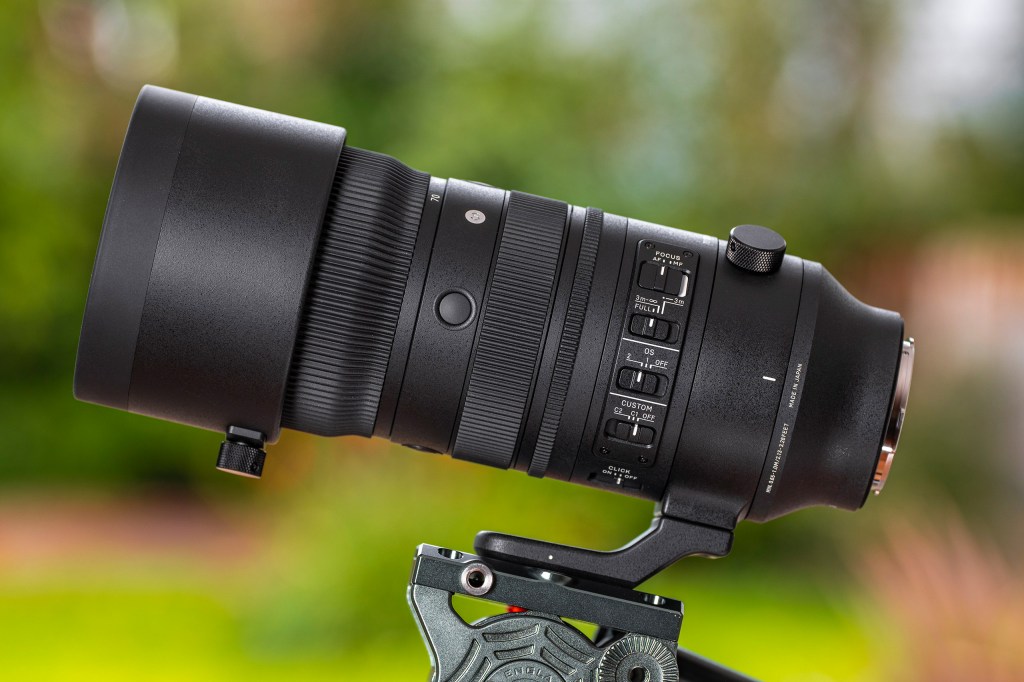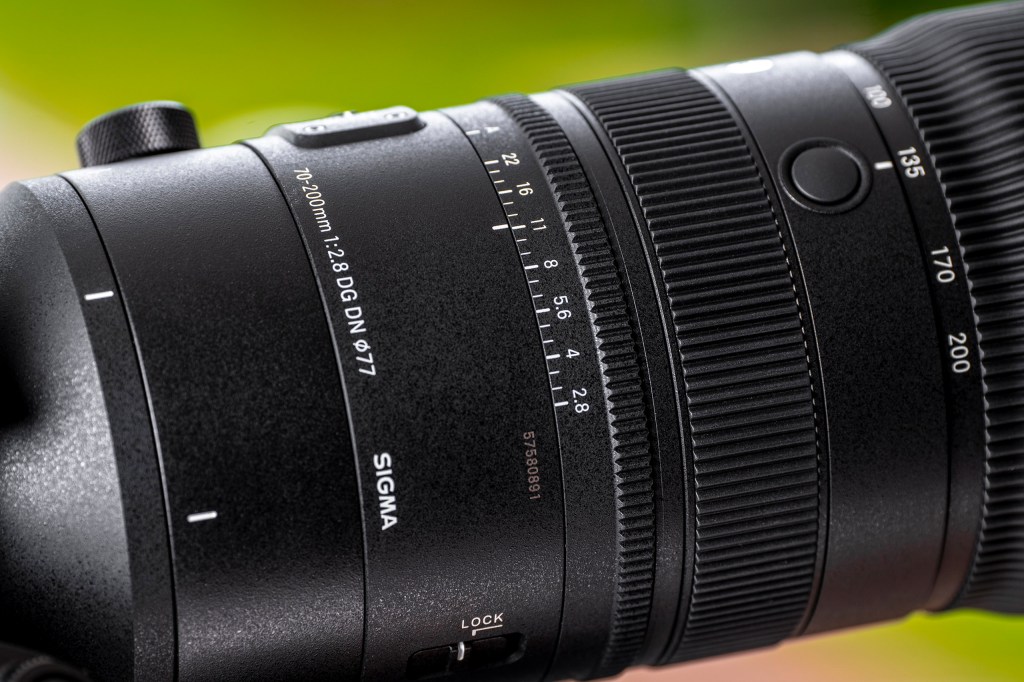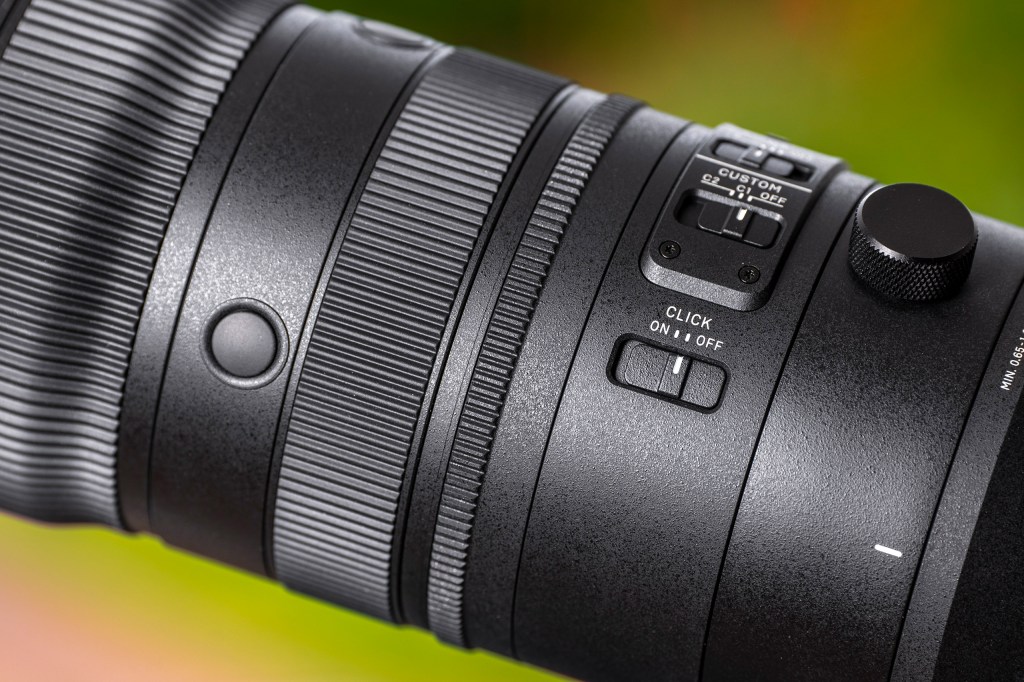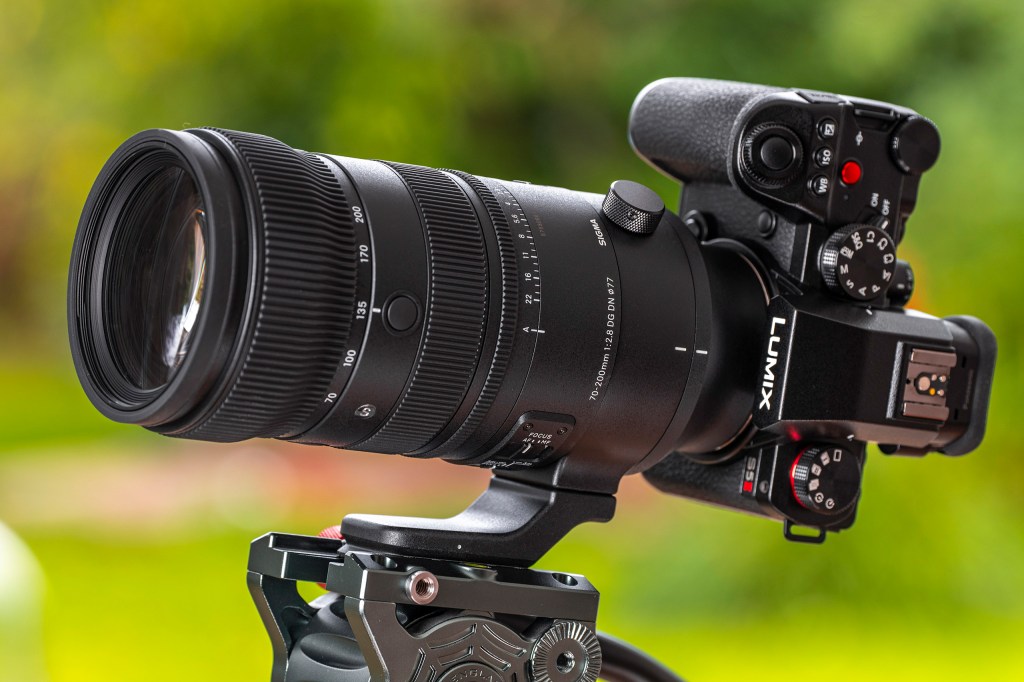Remarkably, the new Sigma 70-200mm F2.8 DG DN OS Sports is the first 70-200mm the company has made specifically for mirrorless cameras. I expect even the company’s highly visible president Kazuto Yamaki has lost count of how many versions of the 70-200mm lens Sigma has made in the last 60 or so years, as lenses with this focal range, or thereabouts, have been the bread-and-butter of manufacturers since the technology first existed to make them.
Sigma 70-200mm F2.8 DG DN OS at a glance:
- $1499 / £1499
- Large aperture telephoto zoom for full-frame mirrorless cameras
- Minimum focus distance 0.65 – 1.0m
- Uses 77mm filters
- 90.6mm diameter x 205.5mm length, 1345g
- Available in L and Sony E mounts
When paired with a 24-70mm, the 70-200mm provides many photographers with all they need for day-to-day shooting. All we have to do is decide whether we can afford an f/2.8 version, or we’d prefer to go with a lower-cost and more portable f/4 model. Traditionally, Sigma has offered us f/2.8 lenses that cost much less than those offered by the camera manufacturers, allowing users to get that faster maximum aperture for a similar price to the f/4 versions of camera brands.
The fast aperture/smaller price tag Sigma trademark is maintained once more, with this L- or E-mount lens selling for $1500 / £1500 – significantly less than the equivalent lenses from Sony and Panasonic. But while in the olden days Sigma was a ‘secondary’ brand, in the last decade or so we’ve seen the company produce lenses that exceed the quality of those offered by the camera brands, and which often offer original or additional features.
Sigma 70-200mm F2.8 DG DN OS Sports: Features
Sigma’s existing 70-200mm f/2.8 DG OS HSM lens is designed for Nikon and Canon DSLRs and, at 1805g, it’s pretty heavy. The company hasn’t just reworked this old design into a new mount, but has taken the opportunity to completely redesign the optical structure of the lens to make the most of the shorter back focus of the mirrorless L and E mounts, and to introduce its newest focusing systems.
The result is the shedding of lens elements as more modern elements take the place of multiple others, leading to a lens that’s a full 460g lighter at 1345g. The barrel is also smaller now, so the filter size has dropped from 82mm to 77mm. The new lens uses 20 elements in 15 groups, instead of 24 in 22 groups, through the use of three aspherical elements in the new design. We also get six FLD (fluorite-like Low Dispersion) elements and two SLD (Special Low Dispersion) elements that together allow the optical designers to employ fewer elements overall.
The new design has cut the closest focus distance in half, so we can now shoot things as close as 65cm at the 70mm end, and at 100cm at the 200mm end – which can give us an impressive 1:5.2 magnification ratio at 200mm. That’s not exactly macro, but it’s very useful all the same.
Another interesting development is the use of two HLA (High-response Linear Actuator) motors to run the focusing system. The lens uses a pair of focusing groups, each with its own motor to help focus the lens as quickly as possible, but which also helps to reduce focus breathing and to maintain focus while the zoom is being operated. The linear motors respond quickly and move sharply and, importantly for video, do so silently.
A key feature of this lens is the optical image stabilisation system, with the company’s new OS2 algorithm, which provides up to 7.5 stops of anti-shake compensation. Depending on the body on which you use the lens, you will be able to determine whether in-camera, in-lens or a combination of in-camera and in-lens stabilisation takes the lead.
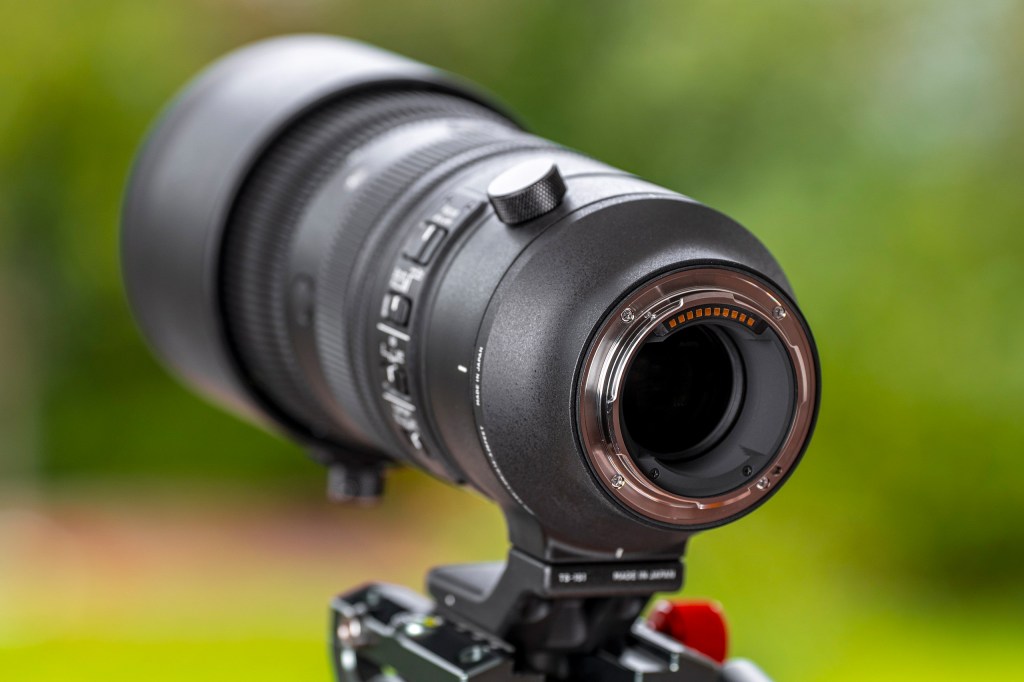
The L-mount version is compatible with Sigma’s 1.4x and 2.0x teleconverters. Credit: Damien Demolder
As the name suggests, the f/2.8 aperture is constant throughout the zoom range, and an internal zoom design means that the lens doesn’t vary from its 205mm length whatever focal length you choose. The iris has 11 blades giving a minimum setting of f/22. It’s also useful to know that, in its L-mount incarnation, the lens is compatible with the company’s 1.4x and 2x tele-converters.
Sigma 70-200mm F2.8 DG DN OS Sports: Build and handling
One notable new feature, compared to the old DSLR design, is that the lens has a manual aperture control ring, with third-stop values and an A position clearly marked. The aperture ring can be used with regular click-stops, but the ring can also be de-clicked so it doesn’t disturb your audio track while recording video. The aperture ring can be locked too, but only to prevent it switching between the A and manual positions – you can’t lock in a specific setting. The aperture ring is quite close to the focus ring, but they feel different enough that you will quickly get used to which is which.
A focus limiter allows us to direct operations within specific distance ranges, with Full, 3m to infinity, and closer-than-3m settings, and L-mount users can customise these limited ranges (as well as how the stabilisation operates) using the optional UD-11 USB dock. Three function buttons before the zoom ring can be customised to perform specific tasks (jointly, not individually) such as AF-on, AF-Lock or AF-Near.
A further control point on the barrel offers to turn OS off, to set it for general use or to tell it that we will be panning. We have a switch for three saved custom settings, and a switch for manual and auto focus operation.
A substantial tripod foot comes with an Arca Swiss shaped mounting plate built-in, and the collar it’s attached to lets us rotate the lens through 360°, indicating 90° angles with clicks along the way. The foot can be removed using an Allen key.
Should you find yourself out in British weather you’ll be glad to know the barrel is sealed against moisture and dust, and a gasket that sits around the mount helps to seal it against the camera. Sigma says the combination of carbon fibre and thermally stable plastics in the construction help the lens perform well in all temperatures, keep the structure lightweight and provide a strong, protective casing for the optics.
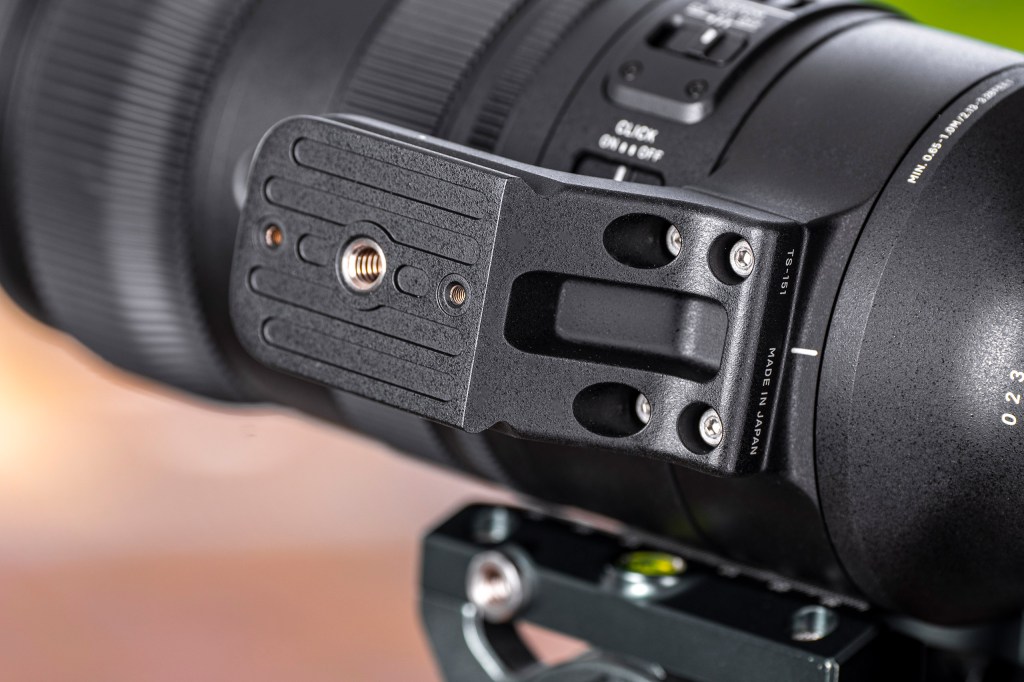
The tripod foot has an Arca Swiss plate built-in and can be removed using a hex key. Credit: Damien Demolder
The finish of the lens is remarkably attractive too, which of course shouldn’t matter – but it does. The whole unit looks very smart indeed.
Sigma 70-200mm F2.8 DG DN OS Sports: Performance
I’ve been impressed with the pace at which this lens operates, and could not detect any lag or speed disadvantage in using this Sigma model over the proprietary model for the Lumix S5ll and Lumix S1R I tested it on. The lens certainly doesn’t hold the camera back in any way, and in fact offers us a number of handling benefits that the Lumix equivalent does not. I found it fast, and very nice to use.

Shot using the Sigma 70-200mm F2.8 DG DN OS on the Panasonic Lumix S5IIX. Credit: Damien Demolder
Click on any sample image to see the full-size version
As much as I’m a big fan of manual aperture rings, I locked it on A when shooting stills. But when the viewfinder was away from my eye, I enjoyed the ability to alter the iris manually, and silently, for video.
I’ve been impressed with optical image stabilisation too. When the lens was attached to the Lumix bodies I used it on, the cameras gave way to allow the lens to do most of the work. It makes sense with a long lens like this. Switching the OS on and off while looking through the finder the difference is immediately obvious, and when using mode 2 during panning the system allows a smooth view without jolting in the finder. I also found this to be true with the camera in portrait orientation.

Optical stabilisation works well while panning. Sigma 70-200mm F2.8 DG DN OS on Panasonic Lumix S5IIX. Credit: Damien Demolder
While the handling and practical performance impress when the lens is actively in use, it is the optical performance that will get our attention once the images are magnified on the PC monitor. As much as I’ve tried, my usual image quality tests have left me somewhat unable find anything much that’s wrong with the lens.
While there are nuances in the lens’ ability to render detail across the focal lengths, apertures and focus distances, the range of the lens’ resolution only slips below what I would call ‘very good’ when the aperture is set to f/16 or f/22, due to the blurring effect of diffraction. At all other apertures you can be sure of exceptional image quality – and even f/22 isn’t bad, it just isn’t as good as the wider apertures.

The lens is very sharp, and capable of recording impressive levels of detail. Sigma 70-200mm F2.8 DG DN OS on Panasonic Lumix S5IIX. Credit: Damien Demolder
The pattern of optical resolution remains constant at all focal lengths. At f/2.8 the lens is very good, but it improves to a peak at around f/4, it tips very slightly at f/8, remains very good to f/11, drops a bit at f/16 and then drops noticeably at f/22. While resolution is very good at 70mm, it is from 135mm to 200mm that we get the better performance.
So, I suppose in line with how people will want to use the lens, Sigma has optimised resolution for wide apertures at the longer focal lengths – which will keep the majority of users very happy indeed.

Images stay clean and devoid of colour fringing even when shooting directly into the light. Sigma 70-200mm F2.8 DG DN OS, Panasonic Lumix S5IIX. Credit: Damien Demolder
The images are clean too, with plenty of detail uninhibited by colour fringing. Contrast remains very high too, and flare is very difficult to initiate even when pointing directly into the rising sun and its reflections on water.
I didn’t test the lens with the compatible tele-converters, but the solo optical performance put the lens on a solid footing for its images to be magnified further without dire consequences.

Sigma 70-200mm F2.8 DG DN OS sample image on Panasonic Lumix S5IIX at f/2.8. Credit: Damien Demolder
Vignetting is only a slight feature of this lens’ performance, and those using it for natural subjects are likely to not notice it at all. There is some shading at the widest apertures at all focal length positions. On a plain background it is reasonably obvious at f/2.8, but is mostly gone by f/4.
Sigma 70-200mm F2.8 DG DN OS Sports: Our Verdict
Sigma has once again demonstrated it knows what photographers want and need, with a lens that performs exceptionally well in the areas that really matter. When we buy a 70-200mm we want to be able to use it wide open at the long end and know that we aren’t going to forfeit resolution, and that is exactly what this lens delivers. And, to top it off, Sigma gives us a constant f/2.8 aperture for less than the money other brands expect for an f/4 lens.

The lens resolves plenty of detail for cropping – this is a 3,4M crop from the centre of the image at 200mm. Sigma 70-200mm F2,8 DG DN OS, Panasonic Lumix S5IIX. Credit: Damien Demolder
This lens is a full £1100 less than Sony’s equivalent f/2.8 lens, and £700 less than the Panasonic model, which is no mean feat. The rules of retail though say that with lower cost comes compromise, but those rules really don’t seem to apply here. We get a host of features on the barrel, fabulous handling, useful offerings such as clickless apertures, and a really first-rate optical performance to go with it. Frankly, I’m not sure what else we could ask for.

Follow AP on Facebook, Twitter, Instagram, and YouTube.

